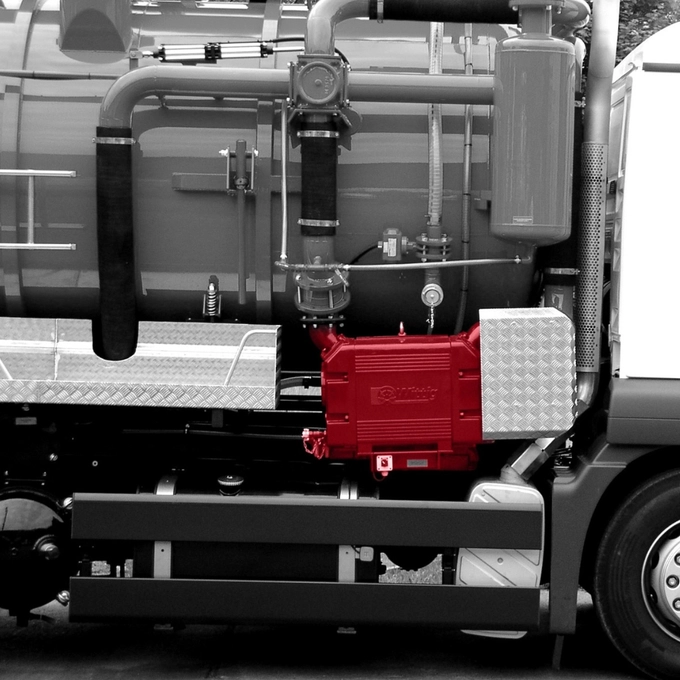Introduction
Semi trucks rely on powerful braking systems to handle heavy loads and long hauls. But what happens when the vacuum pump for semi truck fails? Drivers may face reduced braking efficiency, safety risks, and costly downtime. In this guide, we’ll explain what vacuum pumps do, how to spot problems, and how to choose the right replacement.

What Is a Vacuum Pump for a Semi Truck?
A vacuum pump generates the vacuum pressure needed for systems like:
- Air brakes
- Emission controls
- Turbocharger actuators
Without a functioning vacuum pump, the truck’s braking and emissions systems won’t operate properly.
Read too: Franklin Truck Parts Near Me: Your Complete Guide to Local Truck Parts & Repair Solutions
Why Do Semi Trucks Need a Vacuum Pump?
Semi trucks weigh up to 80,000 pounds fully loaded, so reliable braking is critical. The vacuum pump provides the suction power that:
- Assists air brakes when engine vacuum is insufficient.
- Maintains consistent brake pedal feel.
- Supports emission systems to meet EPA regulations.
As one truck mechanic explained: “A failing vacuum pump is more than an inconvenience—it’s a safety hazard that can put drivers and cargo at risk.”
Signs of a Failing Semi Truck Vacuum Pump
Watch for these common warning signs:
- Hard brake pedal: Brakes feel stiff or unresponsive.
- Unusual noises: Grinding or whining from the pump.
- Oil leaks: Vacuum pumps often run on engine oil.
- Check engine light: May indicate low vacuum pressure.
If left untreated, a bad vacuum pump can lead to brake failure.
Types of Vacuum Pumps for Semi Trucks
| Type | How It Works | Pros | Cons |
|---|---|---|---|
| Mechanical | Driven by the engine | Reliable, long-lasting | Can cause oil leaks |
| Electric | Runs independently of the engine | Consistent vacuum, even at idle | Higher upfront cost |
Choosing the right type depends on your truck’s make, model, and workload.
How to Replace a Vacuum Pump in a Semi Truck
Replacing a vacuum pump is usually a 3–5 hour job. Here’s a general step-by-step process:
- Disconnect the battery for safety.
- Drain engine oil if the pump is oil-lubricated.
- Remove mounting bolts and detach vacuum lines.
- Install new pump, ensuring gaskets are aligned.
- Reconnect vacuum lines and wiring (for electric pumps).
- Refill engine oil and check for leaks.
- Test the brakes before driving.
Always consult your truck’s service manual for torque specs and part compatibility.
Advantages vs. Disadvantages of Replacing a Vacuum Pump
Advantages:
- Restores braking safety and performance.
- Improves fuel efficiency by supporting emissions control.
- Prevents costly roadside breakdowns.
Disadvantages:
- Parts and labor can cost $400–$1,200.
- Downtime during replacement may affect delivery schedules.
- Incorrect installation can damage the system.
Maintenance Tips for Longer Vacuum Pump Life
- Check oil levels regularly (for mechanical pumps).
- Inspect hoses and connections every 25,000 miles.
- Listen for unusual noises during pre-trip inspections.
- Replace seals and gaskets when worn.
Preventive maintenance helps avoid sudden pump failures.
FAQ: Vacuum Pump for Semi Truck
1. How long does a semi truck vacuum pump last?
On average, 100,000–150,000 miles with proper maintenance.
2. Can I drive with a failing vacuum pump?
It’s not safe. Reduced braking power increases accident risk. Replace it immediately.
3. What’s the cost of replacing a vacuum pump?
Between $400 and $1,200, depending on truck model and labor rates.
4. Are electric vacuum pumps better than mechanical ones?
They provide more consistent performance but cost more upfront.
5. Can I replace a vacuum pump myself?
Experienced mechanics can, but DIY repairs are risky if you’re unfamiliar with truck braking systems.
Conclusion
The vacuum pump for semi truck is a small component with a big impact on safety and performance. Recognizing failure signs early, choosing the right replacement, and maintaining it properly can save money and prevent breakdowns.
If this guide was helpful, share it with fellow truckers—keeping rigs safe on the road benefits everyone.
Leave a Reply